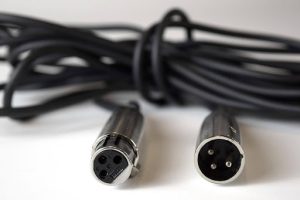Going Remote- 5 Steps To Enable Smooth Transition

The outbreak of COVID-19 has compelled businesses to Enable Smooth Transition. With the mandatory lockdowns, companies across the globe were forced to close down their physical offices and move to the work-from-home model. Even as the world gets used to the idea of living with the pandemic, remote work seems to be the better option to keep the contagion under control. While the organizations that already had established policies and practices for remote work have been able to adapt to a significant extent, others that are new to the concept are still struggling. The key lies in knowing the steps that enable a smooth transition and embracing them as a part of your existence. Here are the enterprise mobility measures that you need to implement as a part of the move.
Step #1: Ensuring everyone has devices that match their needs
A majority of devices suffice for general tasks such as answering emails and preparing sales presentations. But you cannot expect them to deliver to the needs of people requiring to access heavy applications, such as designers and software developers. Facilitating remote work for your employees requires you to let them choose their own device according to their needs. At the same time, it makes sense to compile a list of devices that fit into the budget of your organization. In case you let the employees use their personal devices as a part of remote operations, a proper BYOD security policy should be in place. When it comes to going remote, you will also need to provide accessories for virtual collaboration to the employees.
Step #2: Configuring all devices to mobile device management (MDM) platform
When you have a large team of employees using multiple devices from remote locations, managing and securing these devices and data is essential. This is best done by configuring them all to a mobile device management (MDM) platform. Additionally, you will need to make sure that these devices are protected with a strong password. Further, there should be consistent security policies that define the apps, files, and settings to be installed automatically on devices. When it comes to the undeniable advantages of mobile device management, it does not only offer a common platform for managing the devices. You can go a step further and leverage it for provision devices that are immediately ready for use and totally under your control.
Step #3: Providing access to the necessary apps and data
The biggest challenge of going remote lies in connectivity. So you will need to provide access to all the requisite apps and data for the employees. They should be able to use them any time so that they can work without interruption, even when they are not in the office. With MDM, organizations can ensure that devices have the right technology up-and-running with remote access to the applications remotely. The same goes for business files and data, though you can rest assured about them from the security perspective. You can even provide access to the organization’s internal network by installing VPN settings to remote devices via MDM.
Step #4: Facilitating virtual collaboration with the right tools
When teams operate remotely, smooth communication keeps the business running. Obviously, you will have to empower your workforce with the right set of tools that drive virtual communication. These tools and apps like Zoom and Skype facilitate exchange of information between teams, which translates into higher productivity and efficiency. And they also let the employees stay in touch with the clients and provide them support and services when they need them. More importantly, they encourage positive connections that protect the team members from social isolation and promote their emotional health even during such tough times.
Step #5: Being realistic about goals and achievements
Providing the right technology support for your team is just half the work done when it comes to making a successful transition to the remote model. The other, and perhaps the more important, part of the transition is backing them with realistic goals. You cannot expect people to deliver the same levels of productivity from home as they do in the office. Some may actually deliver more while others are not able to perform well under the pressure and distractions at home. Each member in the team needs relentless support to do their best and this is possible only if you have realistic expectations about their goals and achievements. Focus on employee wellness and be there for them.
To Enable Smooth Transition is tough and it seems that the honeymoon phase is over for businesses and employees. Both of them would now have to step up and go the extra mile to align with the massive change that lies ahead. Taking these measures seriously can be of great help.
Table of Contents







